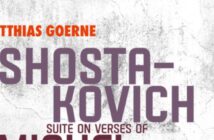-
4
The sixth and seventh symphonies are central to the composer’s work, in both senses of the term. Written in 1939 and 1941, they develop the method that Shostakovich invented in the fifth symphony of delivering two messages at the same time – public optimism to fool the commissars and private anxiety to express what the audience was experiencing under Stalin’s terror.
The sixth, written as the Soviet Union was signing its notorious alliance with Nazi Germany, opens with an ominous phrase from Malher’s tenth symphony, which Shostakovich had neither heard nor read. Brisk, bold and barely half an hour long, it intermingles tremulous string passages with reckless piccolo riffs and a general screw-it-we’re-dead-tomorrow attitude.
The seventh, written in dual defiance of the German bombardment of Leningrad and Stalin’s unrelenting oppression, is an hour and twenty minutes of in-your-face resistance – one man’s shout for a hundred musicians and millions of victims. If I have a small reservation about the Boston Symphony’s playing under Andris Nelsons it is that they lack the ragged edges that Shostakovich might have expected to hear in music of such half-blinded rage. Russian orchestras leave blood on the floor after playing Shostakovich 7. Boston leaves, at most, tissues.
This is a small caveat, however. The Nelsons cycle is proving epochal, a must-have guide to the works of this great master. The present pairing comes with a bonus – his 1939 incidental music to Shakespeare’s King Lear, richly evocative and enjoyable.














